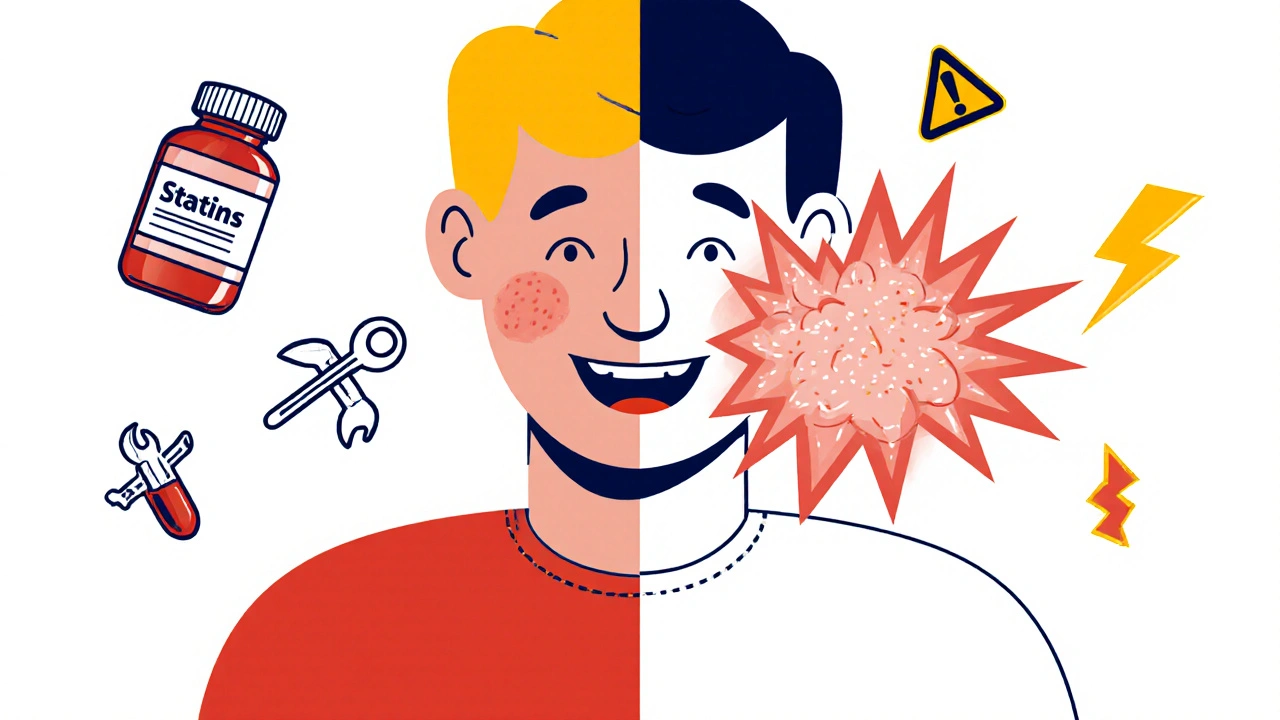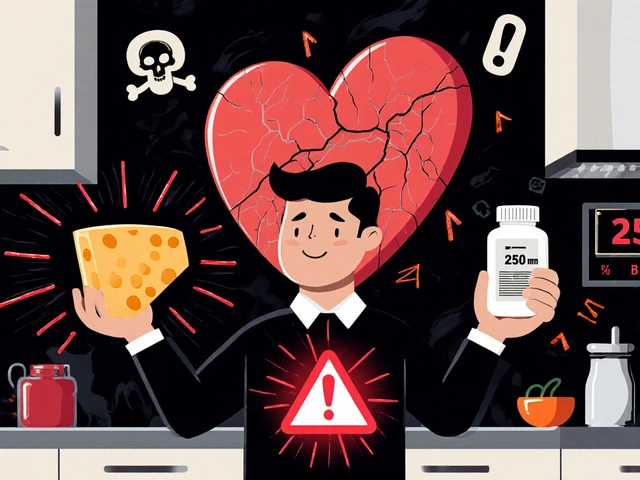Side effects: Spot, manage, and stay safe with your meds
Side effects are any unwanted changes you notice after starting a medicine. Some are mild—nausea, dry mouth, or drowsiness. Others are urgent—shortness of breath, swelling, high fever, or sudden vision changes. Knowing which reactions are routine and which need immediate care keeps you safer and less anxious.
Start by tracking what you take. Keep a list with drug names, doses, when you started them, and any other medicines or supplements. That list makes it faster for your doctor or pharmacist to spot interactions. Use a phone note or a paper wallet card you carry. When a new symptom appears within days or weeks of a new drug, treat the timeline as a clue.
Watch for common patterns. Antibiotics can cause diarrhea or rashes; blood pressure drugs often make you feel tired or lightheaded; antidepressants may change sleep or appetite. For example, our guide on Toprol (metoprolol) explains why lightheadedness can happen when blood pressure drops. Depakote (valproic acid) users should be aware of appetite and mood shifts, as covered in our Depakote article. These specifics help you judge risk faster.
Some side effects happen slowly. Hair thinning can show up months after starting rheumatoid arthritis drugs like methotrexate or sulfasalazine. We explain treatment options for drug-induced hair loss, including minoxidil and PRP, in our hair-loss guides. Other harms, like ethambutol’s risk to vision, demand regular checks—read the Myambutol post for details.
If a symptom is severe—trouble breathing, chest pain, sudden weakness, high fever, or severe allergic reaction—call emergency services. For less urgent problems, contact the prescribing clinician, or ask a pharmacist. Describe when the symptom began, how it progressed, and any self-care steps you tried. If treatment changes are needed, don’t stop prescription meds abruptly unless a clinician tells you to—some drugs cause withdrawal or rebound effects.
Avoid guessing when mixing medicines. Over-the-counter supplements and herbal remedies like sage or Iceland moss can interact with prescription drugs. Our supplement guides show which herbs have been studied and which need caution. Also, online pharmacies vary. If you buy meds online, pick verified vendors; counterfeit drugs can cause unexpected side effects.
Simple steps reduce risk: follow dosing directions, avoid alcohol when advised, test new activities like driving until you know how the drug affects you, and report any side effects promptly. Take photos of rashes or keep symptom notes to show your clinician.
Want targeted help? Check our articles on Depakote, Toprol, Myambutol, and drug-induced alopecia for specific side-effect profiles and practical tips. Read related posts, save useful links, and bring your medication list to appointments. When you know what to expect and how to act, side effects stop being a mystery and become manageable.
Older adults and children may react differently — tell your clinician about age, pregnancy, or kidney and liver problems. Keep a photo of your prescription label and note pharmacy contact info. If a change fixes the problem, record it so future prescribers know. Small records save time and prevent repeating mistakes. Ask questions. Never assume. Keep copies.
Learn the real difference between medication side effects and true drug allergies - why confusing them can cost lives and money, and how to know which is which for safer treatment.
View DetailsA detailed comparison of Asendin (Amoxapine) with popular antidepressant alternatives, covering mechanisms, side effects, dosing, and how to choose the right medication.
View DetailsIn my exploration of povidone-iodine, I've found that it's widely recognized for its safety and effectiveness as a topical antiseptic. However, like any medication, it may trigger side effects in some individuals such as skin irritation or allergic reactions. While it's rare, systemic absorption can occur, especially when used on large wounds or burns, which could potentially lead to thyroid or kidney issues. It's also worth mentioning that prolonged use can cause skin discoloration. Always remember, the key is to use it as directed by a healthcare professional.
View Details



